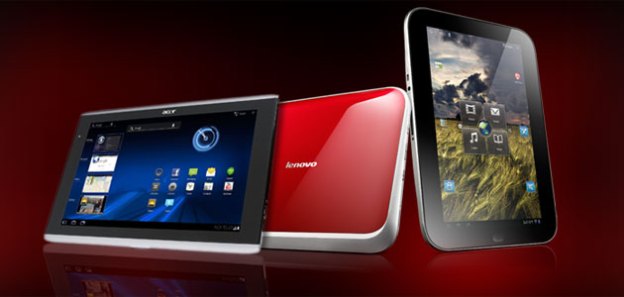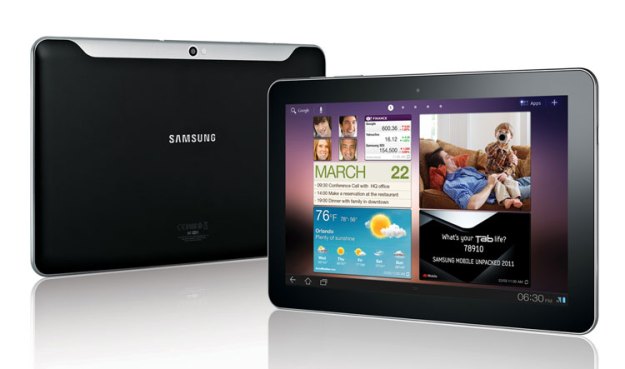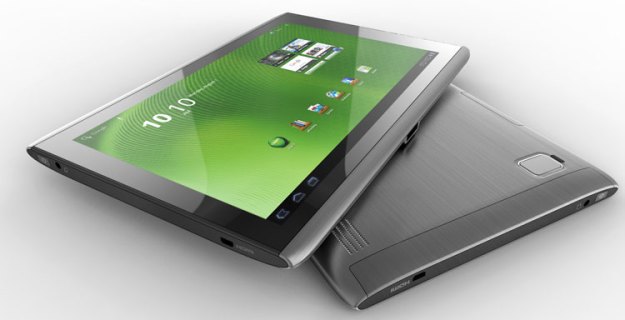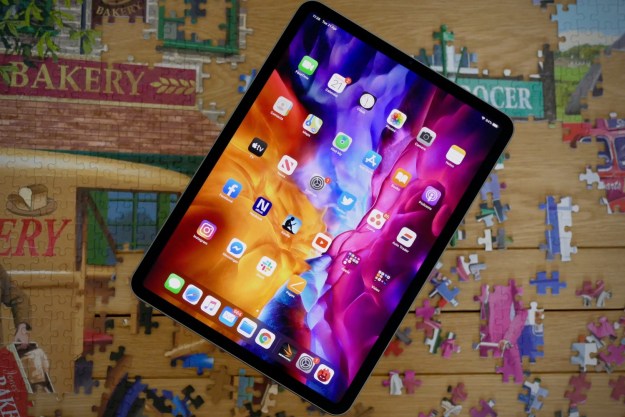
When you look at Apple’s sales figures for the iPad and compare them against the Android tablets, it is clear that Apple is getting the vast majority of the tablet business. Over the last several months, we’ve been playing with the new iPad, and it isn’t perfect, but it has provided an experience consistently better than the Android tablets (with one interesting exception, which I’ll get to later). Part of the reason is that when there is a problem with the iPad, we can set an appointment with the Genius bar and those folks do a nice job of getting you back up and running.
With the software updates connected to Honeycomb 3.1, things are getting better, and early reports on 3.2 show improvements coming, yet I still wonder if what the Android providers are missing isn’t a Genius-bar-like offering to close the gap. I’ve had the opportunity to test a number of Android tablets, and all of them presented a hitch somewhere. Here’s how the first batch of Android tablets fared.
(I should point out that all of these tablets run the wonderful Nvidia Tegra 2 hardware, which means in terms of processing and graphics performance, they were stunning. But the issues they did have had to do with the software load.)
Dell Streak
The one Android-based tablet that has performed like a champ is the Dell Streak (I have both the 5- and 7-inch products). The reason for this is that it runs the 2.2 version of Android, rather than the newer 3.x Honeycomb series that folks figured was going to be a lot better. This seems like arguing that Windows XP is better than Windows Vista, and well, it kind of is. The older 2.2 version of Android (Froyo) is what is running on most of the smartphones, and it has a vastly deeper application base. Carriers also appear to be better at getting Google to assure quality than the tablet providers are. While this may not seem initially intuitive, the result has been a product that actually crashes less, is more reliable, and runs things like Slacker (which is my chosen music service) that the 3.x products don’t yet run. The 7-inch product works great as a bedside tablet. It has become the replacement for my alarm clock and a quick way to check email when I wake up in the morning.

This helps build the argument that the hardware side of these products is fine, the hardware vendors have done their part, and it is the software that needs work. The funny thing about this is that it suggests that Windows Phone 7 (it has higher customer satisfaction than Android 2.2 has) could have been very successful on a tablet, and been a nice place holder until Windows 8 shipped.
Check out our hands-on impressions of the Dell Streak.
Asus Transformer
This is my favorite 10-inch tablet. What’s funny is that the real reason is that it is the most like a notebook computer. I’m having one sustaining problem with this tablet, and that is that the included calendar application, which connects to Exchange crashes on load. I can use my smartphone for the calendar, and this is more annoying than critical, but I haven’t even been able to figure out how to begin going about fixing this issue. (If this were an iPad I’d go to the Genius bar but Asus doesn’t have one of those.) Mobile Me isn’t exactly perfect either, which is why it is being replaced with iCloud, and the folks that created it were mostly fired.

The product with the keyboard attached isn’t light (the keyboard adds about a pound), but like other products in its class, the battery life is exceptional.
Samsung Galaxy Tab 10.1
The Samsung is the most iPad-looking product I’ve had in. It is absolutely stunning, and I think it actually looks better than the iPad 2 does. No wonder Steve Jobs is upset with Samsung. I’ve had the most trouble with this product though, as there appears to be some background Samsung App that crashes a lot and slows performance. My working theory is that the update to Android 3.1 didn’t take well and my experiences don’t appear consistent with other users I’ve spoken with so I’m working on getting the product reimaged or fixed. Once again, if there had been a Genius-Bar-like service, I’d likely have this repaired by now and be in good shape.

Check our Samsung Galaxy Tab 10.1 Review.
Acer Iconia Tablet
This product is clearly not an iPad, and it’s heavy. But, like most of these products, it is very attractive but had software issues. Unlike the other products I’ve been reviewing, it is running an earlier release of Honeycomb. This made it more of a science experiment to get running than the others, and issues with the Acer update server made it necessary to send the product back to Acer to be reimaged.

If I wanted an Android tablet that would sit on my coffee table or near the TV, this would likely be my choice. To my eye it is actually the prettiest, but it is a bit heavy given it doesn’t have a keyboard option.
Check out our Acer Iconia Tab A500 Review.
Generic Problems
With all these Android tablets, getting files onto them requires more knowledge of how a PC works than I think most people will put up with. The Asus came with a sync utility, but it wouldn’t see the tablet. Most used Windows Media player, but transcoding videos didn’t work properly, and I had to transcode them manually and transfer the files. Crashes plagued all but the Dell, and I found what I really wanted is to sit down with a support expert and work through the issues, but dial in help just ate up time, I never actually resolved a single problem. I can see an improvement between the 3.01 and the 3.1 tablets, and the stability of the Dell 2.2 offerings suggest that the 3.2 refresh may fix much of this. But until it does, these are best for folks who like to tinker, not for those that just expect them to work out of the box.
Wrapping up: Toshiba, Lenovo Tablets and longing for Windows 8
I’ve heard good things about both Toshiba and Lenovo Android tablets. Particularly if you want to do presentations, the better output ports on the Toshiba Thrive could be attractive. However, the Lenovo IdeaPad that launched this week has one huge advantage in that Lenovo, which makes the ThinkPad line, typically does a better job than most in assuring a good user experience. What really strikes me about the IdeaPad K1 is that, so far, it is the only Android tablet that will run Netflix, which is on my list of critical Tablet applications. The ThinkPad version is coming in August. I’ve seen the prototype and it’s impressive. Lenovo held back on tablets until it could get them right, and there is a reasonable chance its engineers did exactly that. This also suggests that a future update to the other tablets could bring Netflix to them as well, and that this might be worth waiting for.

Finally, the Asus Transformer kind of gives a view of what the Windows 8 products may look like, and if you could have this form factor with full Office, Netflix, and the rest of the Windows eco-system, it would be off the wall amazing. The year 2012 will be a long time in coming.
Editors' Recommendations
- Every Android tablet we’re expecting in 2024
- Should you buy a tablet on Black Friday or wait for Cyber Monday?
- Best Buy is having a HUGE SALE on laptops, tablets and TVs today
- 5 tablet deals you really can’t afford to miss this Father’s Day
- Best Buy discounts iPad 10.2 and Samsung Galaxy Tab S5e for Father’s Day


